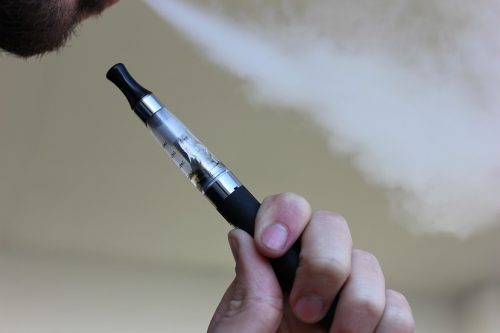Branded as a safer alternative to smoking, e-cigarettes have become widely popularized among teenagers and adults. However, with the recent rise of reported vaping-related deaths, medical professionals and researchers seek to better understand the risks of e-cigarettes.
Led by professor Julie Zimmerman of the Department of Chemical and Environmental Engineering, Yale researchers focused on one of these risks: unlisted chemicals inhaled by consumers. “There are no rules on what has to be listed on the e-liquids. It’ll say glycerol, propylene glycol, and nicotine—but, then it says ‘flavorings.’ That comprises a lot of compounds not specifically listed,” researcher Hanno Erythropel explained. Between these listed and unlisted ingredients, the team found that unexpected chemical reactions occurred, forming new chemical products that may irritate the airways of users. For example, potentially harmful acetals form during a reaction between propylene glycol and vanillin, a flavoring banned from traditional cigarettes.
To verify if these new compounds were transferring to the vapor and affecting users, the researchers built a vaping machine that allowed them to analyze the chemical makeup of vapor from Juul and other manufacturers. “Collaborators at Duke studying toxicity found that the vanillin propylene glycol acetal was more irritating than vanillin [itself],” Erythropel continued. Although the results do not provide a definitive answer to the long-term consequences of inhaling these acetals, there are potential health risks that may arise.
The researchers also identified other compounds such as menthol in unexpected flavors, including Juul’s fruit medley. Due to its cooling effect, menthol counteracts nicotine’s bitterness and encourages users to continue consuming nicotine. Although potential consequences of these chemicals and unforeseen side reactions are still under investigation, users should stay cautious when using e-cigarettes.

